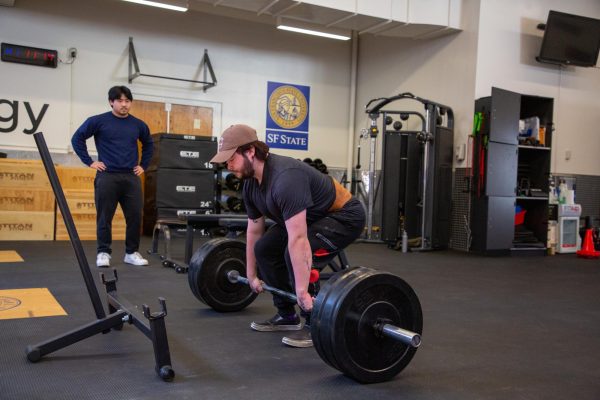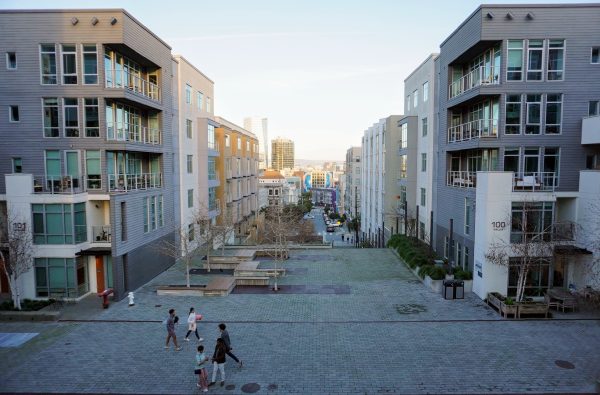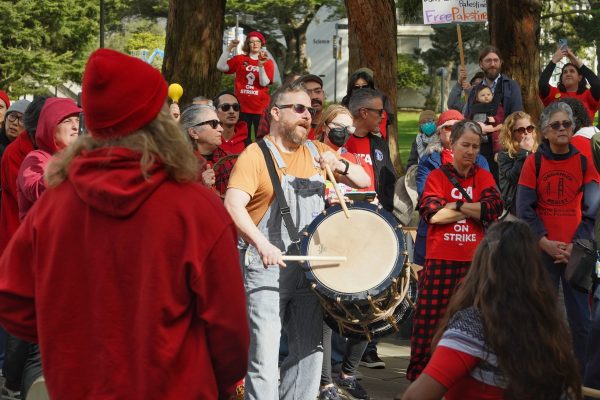Supreme Court ruling a victory for SF State Dreamers
June 23, 2020
On Thursday, the Supreme Court ruled that the Trump administration cannot proceed with its plan to end the Deferred Action for Child Arrivals program, also known as DACA.
In a 5-4 ruling with Chief Justice John Roberts siding with the liberal justices, he wrote in the majority opinion, “We do not decide whether DACA or its rescission are sound policies,” and instead focused on the Trump administration’s failure to “provide a reasoned explanation for its action.”
“Today’s decision by the U.S. Supreme Court to block the Trump administration’s order to end the Deferred Action for Childhood Arrivals (DACA) program is a welcome victory for our campus and our community,” SF State Interim Vice President Beth Hellwig wrote in an email on Thursday.
“Our Dream Resource Center (DRC) remains steadfast in its support of our DACA students and other undocumented members of our campus family,” Hellwig said.
The state of California is home to over 200,000 DACA recipients, also known as “Dreamers.” As of late 2017, roughly 25,000 are estimated to be protected under the DACA program in the Bay Area alone. For SF State, this ruling protects hundreds of students, a decision AB 540 Dream Coordinator Luis De Paz Fernandez described as a relief for many.
“They wouldn’t feel as protected, right? Like literally, if they run into ICE agents, because they [would] no longer have direct protection, they are at risk of being deported,” he explained. “Another thing is that once a student gives out their information for DACA, they give up a lot of info to DHS and to the United States immigration services.” De Paz Fernandez also said that work eligibility would also be a major hit to DACA recipients, forcing them to perform under-the-table jobs.
“Put in that context into a college student. How are they gonna pay rent? How are they going to pay all that?” he asked.
De Paz Fernandez, both a former SF State student and DACA recipient , said the DRC was established in 2016 with assistance from Associated Students. Prior to the DRC, the only assistance the school provided was financial counselors who assisted undocumented students. Today, these students have access to the California Dream Act and the Immigrant Legal Defense, which are among the various services De Paz Fernandez and the DRC work to get students to.
While the DRC evolved the campus’ way of accommodating the needs of undocumented students, the school has a consistent history of showing support for them. Sarah Souza, an SF State 2010 alumna, said the center “saved my life.”
“It just gave me a sense of community … that I was not alone, because I was raised by a single mother and had to overcome any barriers,” Souza said. “The center helped me see forms of my rights regardless of my status and helped me go through difficult times. I had a family on campus, so it changed my experience completely.”
Souza is a Dreamer who came to the U.S. from Brazil in 2001 at the age of 15. She is currently the president of the San Francisco Latino Democratic Club and co-chair of the San Francisco Commissions for All Committee. Souza made history as the first Dreamer to join the committee of the Democratic County Central Committee.
The SF State alumna said while DACA is a temporary solution, she is making efforts to affirm the rights of immigrants aside from status. She takes responsibility for building momentum around SB225, which expanded eligibility for state appointments to all California residents over 18, allowing undocumented immigrants the ability to serve on state boards and commissions.
Souza is now working on a charter amendment that would allow of-age San Franciscans with undocumented statuses to serve on city boards, commissions and advisory bodies. The amendment had unanimous support from the board of supervisors and was voted on today to move forward to the November ballot.
“I actually joined a Black Lives Matter group, and we are actually drafting a letter to Congress calling for a current criminal justice reform, which is to defund the police funding and invest in education [and] secondly, humane immigration reform,” Souza said. “We’re also submitting a resolution to the state party to leverage their influence, so we can work with the Congress to actually pass human immigration reform and criminal justice reform. Because at this point, we need to work together. This is not a two movement. This is one movement for human rights and justice.”
Brigitte Davilas, an SF State professor of Latino/a Studies and former professor of Souza, said while the ruling of the Supreme Court was surprising given the court’s conservative leaning, she had reason to believe it would have voted in favor of upholding DACA. Davilas mentioned the court’s June 2019 5-4 ruling against the addition of a citizenship question in the 2020 census, where Chief Justice Roberts also sided with the liberal justices.
“Ending DACA was very popular with President Trump’s base, which seems to be getting smaller and smaller,” Davilas said. “So, playing only to that base is also turning off a lot of people who had voted for him in the past, like white, college-educated women who had tended to vote for him but are now showing signs that they’re leaving.”
In the 2016 general election, white, college-educated women comprised 20% of the vote, with 44% for President Trump. While these women made up 16% of the 2018 midterm election votes, they voted 59% in favor of democratic candidates.
President Trump said in a tweet following the Supreme Court’s ruling on Thursday that he is “asking for a legal solution on DACA” and will now “have to start this process all over again.”
This persistence to end the Obama-era executive order contrasts with the American majority. A POLITICO/Morning Consult Poll found 71% of conservatives, 68% of Republicans and 64% of those who currently approve of Trump believe Dreamers should be protected.
Following Thursday’s ruling, President Trump tweeted again, pondering, “Do you get the impression that the Supreme Court doesn’t like me?”
“He clearly does not understand the separation of powers. He clearly does not understand the role of the executive branch and the role of the judiciary branch,” Davilas said . “He’s used to having Congress just pretty much do everything that he wants– at least the Senate. So he doesn’t have to have an understanding there. So, when something doesn’t go his way, it’s like, ‘Oh, it’s personal. They don’t like me.’ But that’s pretty much clearly spelled out in the constitution.”
Davilas said the upcoming November election raised concerns over the future of DACA and that Trump’s main focus would most likely be eradicating the program.
“It is a temporary sigh of relief, you know,” she said. “We can’t stop, we can’t stop organizing around this issue. We can’t stop right now. So it’s got to keep on going.”














